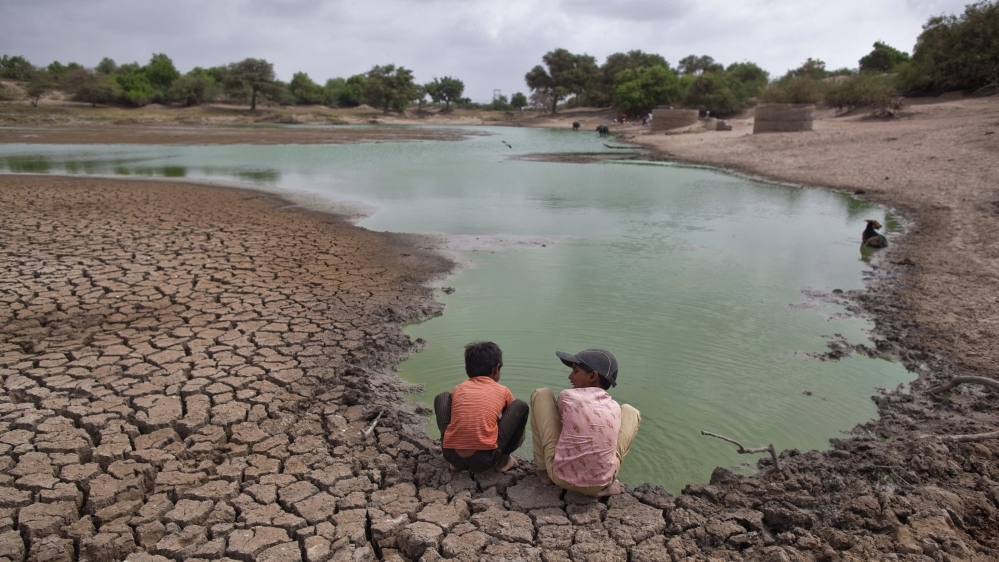Greener grains: Getting tough on India’s fertiliser industry
A new report by an environmental protection group says India’s fertiliser industry is damaging soil and water supplies.

New Delhi, India – It may contribute to hundreds of millions of people’s livelihoods, but India’s fertiliser manufacturing industry falls short of complying with environmental safety standards, even if it is one of the most energy-efficient sectors of the economy, according to a new report.
The widespread production and use of the common fertiliser chemical urea in India’s large agriculture sector has led to alarming levels of nitrogen pollution of surface water and groundwater in many Indian states, says the report produced by the Centre for Science and Environment (CSE), a not-for-profit think-tank.
Keep reading
list of 4 itemsWhy are British farmers pleading for a universal basic income?
Why are some US food producers using antibiotics in meat again?
Photos: Chocolate prices rise as West Africa’s cocoa crisis deepens
Nitrogen is found in most chemical fertilisers and contributes to groundwater contamination, damaging the environment and people’s health globally, just as many regions around the world face acute water shortages.
Chemicals such as urea form the bulk of fertilisers in India, which remains the world’s second-largest consumer of the chemicals after China, according to the report.
“There is a [huge concern] regarding nitrogen pollution in India, and we feel the industry has to do a lot,” Chandra Bhushan, the CSE’s deputy director-general, told Al Jazeera.
Bhushan says the industry contributes to water shortages in many parts of the country that are already parched.
“Our assessment is that in this case, the industry has to do even better than the international standards,” he says.
Green revolution
India has grown rapidly since 1991, when the government began liberalising the economy. But still more than half of its workforce remains engaged in agriculture, which contributed between 17 percent and 18 percent of gross domestic product over the last three years, according to government figures.
Fertilisers have played a major role in improving crop yields, and they have helped make developing countries – including India – more secure in their food supplies.
After periods of famine in the years following India’s independence in 1947, fertilisers helped to transform agriculture starting in the early 1960s – a development that has come to be known as the Green Revolution.
But since then, the industry has been heavily controlled by the government, which runs a central subsidy programme for farmers to procure fertilisers. At present, there are 32 manufacturing facilities that make urea, half of them privately owned. These facilities sell to farmers at discounted prices set by the government, which in turn compensates the manufacturers.
A parliamentary report released in 2016 showed the use of chemical fertilisers was widespread – and yet uneven – across India. The report called for a change in the government’s subsidy policy.
“We have reached a state where fertilisers have been used so much that it has led to a degradation of land quality,” Saudamini Das, an economist at the Institute of Economic Growth in New Delhi, told Al Jazeera. “We need a complete overhaul of the agricultural practices.”
The latest report by the CSE calls for the government to liberalise the industry to make it more competitive, potentially leading to greater efficiencies and more environmentally sound production practices.

Factories currently use fossil fuels to produce fertilisers, but could switch to renewable sources, the report says.
It adds that nearly 70 percent of the nitrogen produced by the fertiliser industry ends up polluting the environment.
“We are not just giving an economic reason for decentralisation, but an environmental one, too,” says Bhushan. “Innovation and greening of fertiliser production would only happen through competitiveness. Market forces should be unleashed.”
Making the switch
In her first annual budget speech earlier this month, India’s Finance Minister, Nirmala Sitharaman, urged farmers to adopt chemical-free agricultural practises and return to more traditional farming methods in an effort to double farm incomes by 2022.
States like Andhra Pradesh and Himachal Pradesh have already rolled out such methods. These regions face several challenges: a crisis of low crop yields, the decreasing size of farmers’ plots due to poor land reform policies and climate change, and low financial returns on farms – all problems that state governments hope to reverse.
Thousands of farmers in these states have committed suicide in the past decade due to unpaid debts.
But many analysts say transitioning to non-chemical farming methods will be tough for many farmers. Farmers in the state of Maharashtra have refused to make the switch fearing a reduction in their harvests.
The increasing frequency of droughts and heatwaves across India has led to calls from many policymakers for a second agricultural revolution.
“Making farming economically viable and sustainable will strengthen rural livelihoods and thereby reduce rural-to-urban migration,” Devinder Sharma, a trade and food policy analyst in New Delhi, told Al Jazeera. “An economically viable agriculture will reignite the rural industries. The path to future economic growth in India surely passes through its villages.”
Sharma says that low yields, falling groundwater levels and continued soil degradation are warning signs that India needs to implement radical changes to its farming sector. “The warning signals are all there,” he says, stressing that it is now “time to act”.